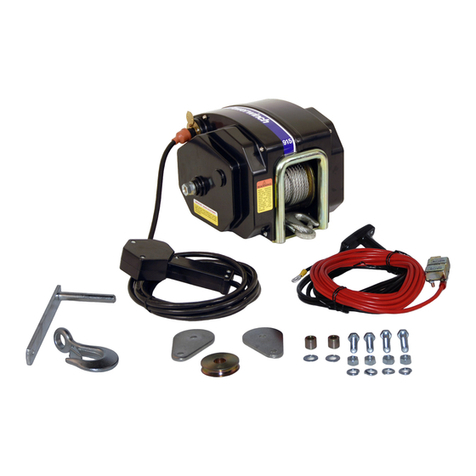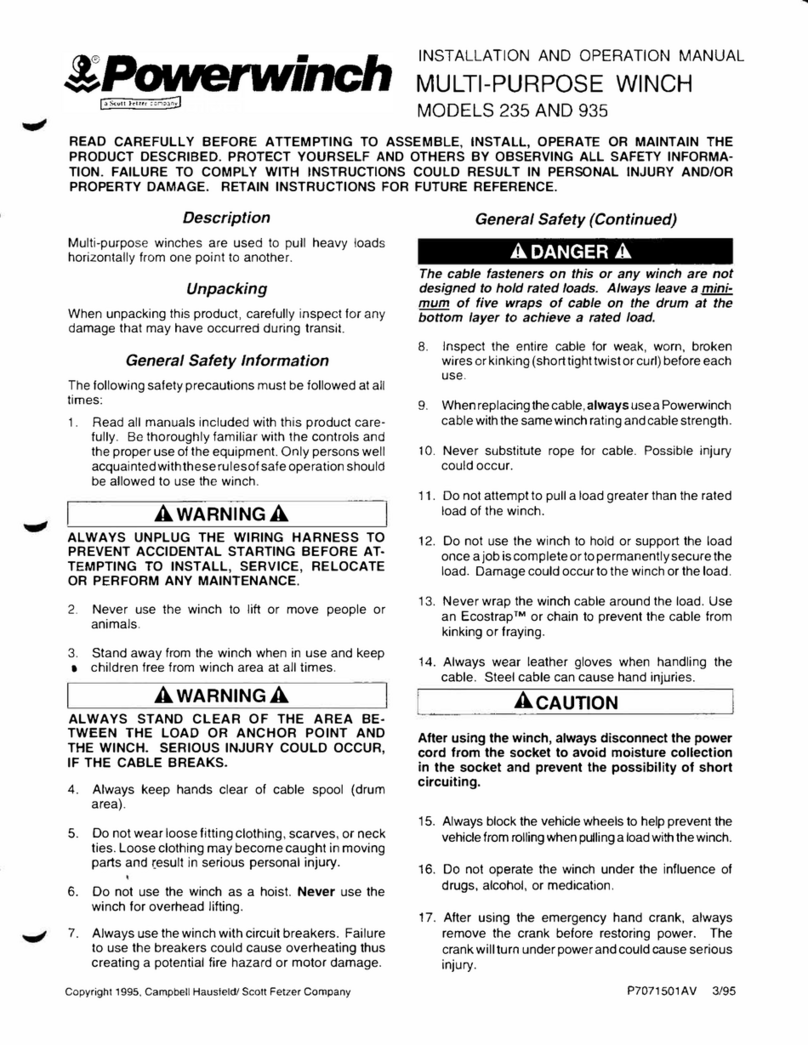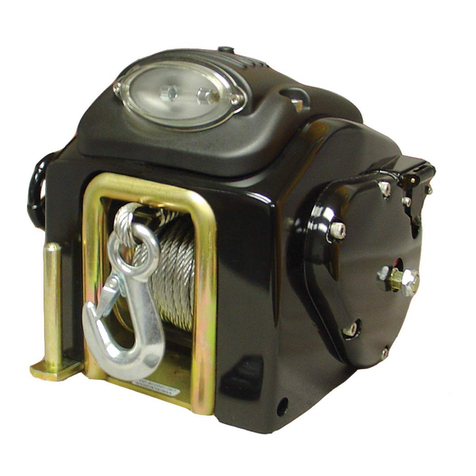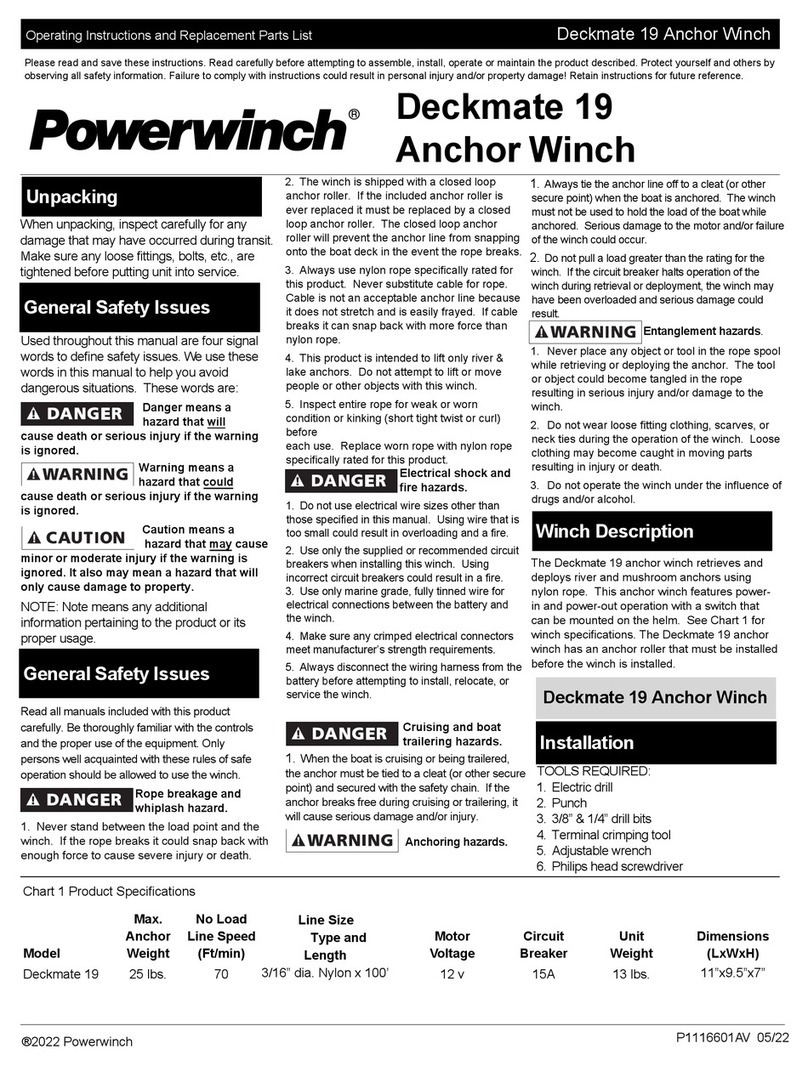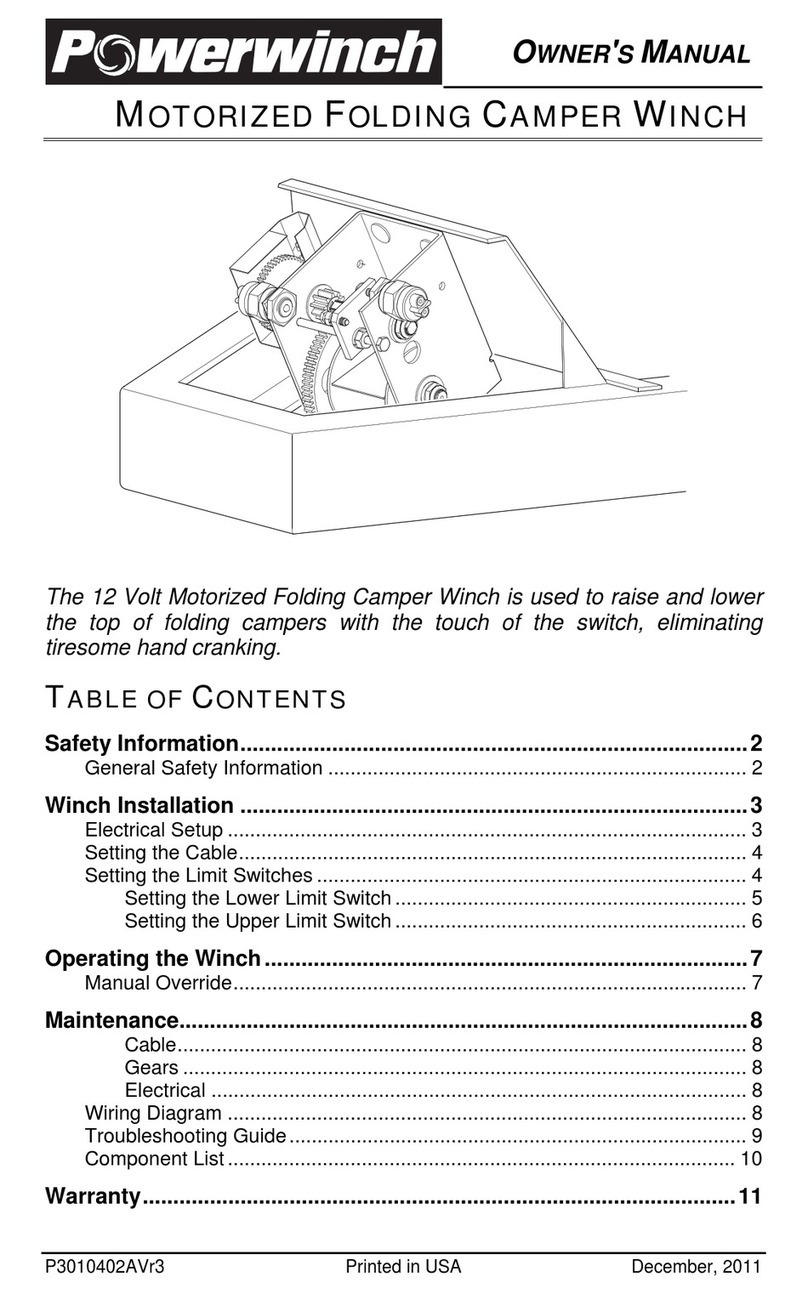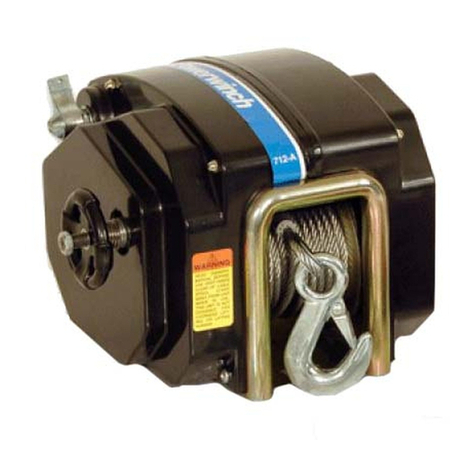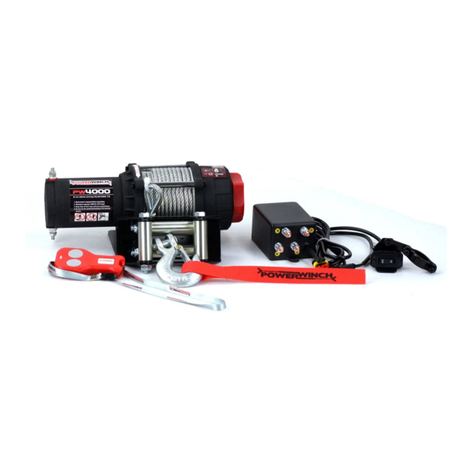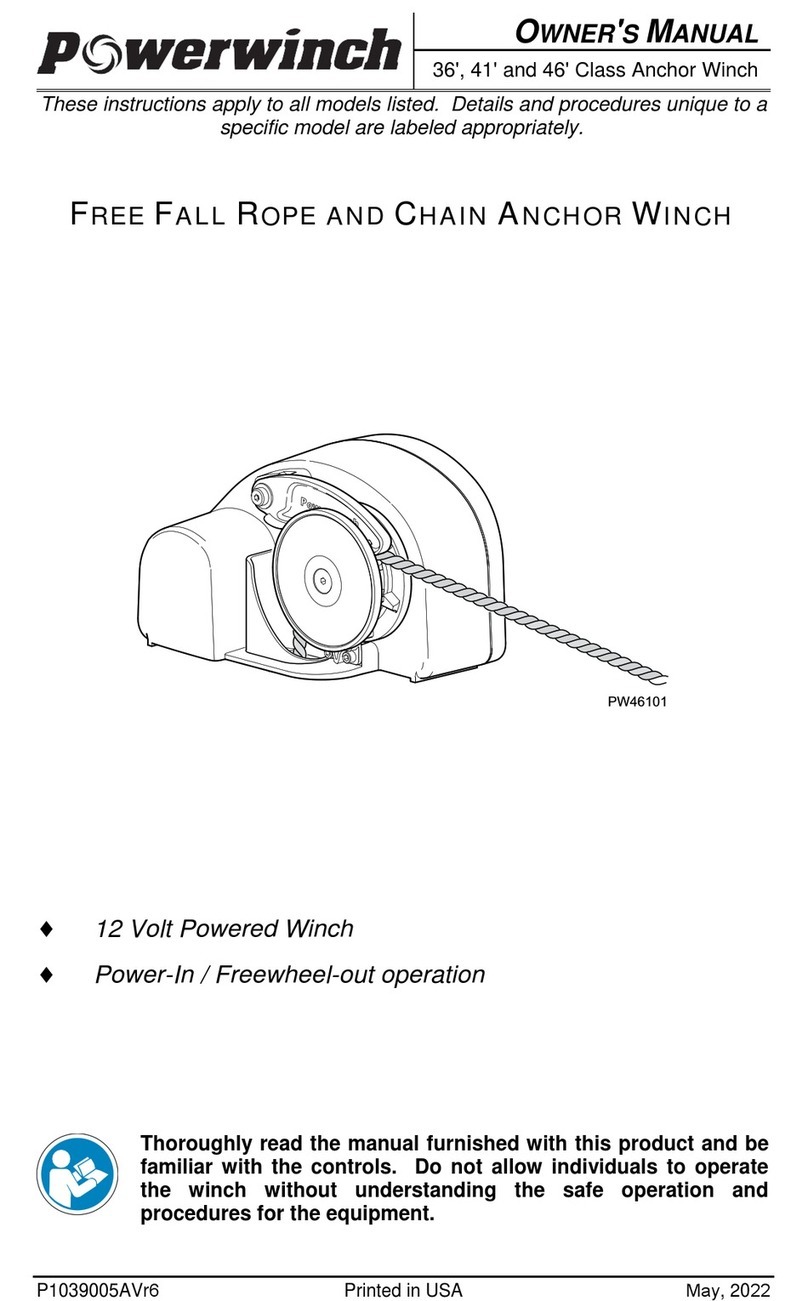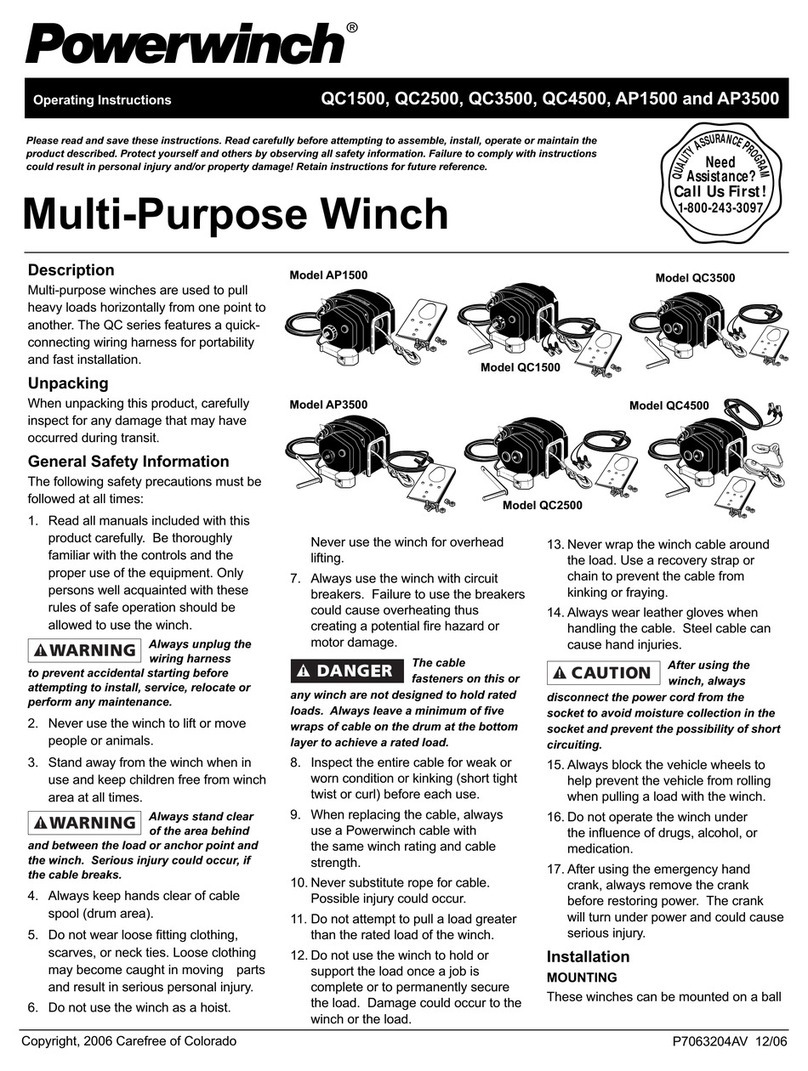
5
Operating Instructions
Operation
UNLOADING
To unload the boat, and follow the
outlined procedures.
Clear the area
around and behind
the boat of people, animals, and obstructing
objects before loading or unloading or
personal injury could occur.
1. Attach the winch cable hook to the
bow eye on the boat.
Always stand clear
of the area behind
and between the load or anchor point and
the winch. Serious injury could occur if the
cable breaks.
The clutch control knob on the side of the
winch controls the loading and unloading
operation (See Figure 3). Turning the
knob counterclockwise releases the
brake and allows the cable to free-wheel
out.
Figure 3
2. Turn the clutch knob slowly in
a counterclockwise motion to
release the brake on the winch.
3. Allow the boat to slide off the trailer (a
slight push may be necessary to start
the boat down the run).
The following warning is for
Model T1650 ONLY.
Once the boat is
moving, do not
attempt to slow or stop the boat motion by
turning the clutch knob. The knob will free-
wheel with the outgoing cable. Any contact
with the clutch knob while in motion could
result in personal injury.
The following statement is for Models
T2400 and T4000 ONLY.
If needed, turn the clutch knob
counterclockwise to use the brake to slow
the boat at launch.
4. When the boat is in the water, release
the winch cable hook from the
bow eye. Be sure to keep constant
pressure on the cable when rewinding
the cable with no load. A loose cable
may rewind improperly and damage
the levelwind plate. Secure the cable
hook to prevent personal injury or
property damage.
LOADING
1. Align the boat and trailer.
Always stand clear
of the area between
the load or anchor point and the winch.
Serious injury could occur if the cable
breaks.
2. Free-wheel the winch cable out and
attach the cable hook to the eye on
the boat.
3. Turn the clutch control knob
clockwise until finger tight to set
the brake (See Figure 4).
Figure 4
4. Step clear of the winch and winch
cable area and power in the cable
until the boat touches the bow stop.
5. Secure the boat to the trailer once the
boat is fully loaded.
Do not use the winch to hold the
weight of the boat
while in transit.
Always secure the
boat to the trailer before towing the
boat and trailer
6. Remove the winch cable hook from
the bow eye and power-in the cable.
Secure the cable hook to prevent
personal injury or property damage.
EMERGENCY HAND CRANK
The emergency hand crank is included
on some models. This emergency hand
crank should only be used when there is
no power source i.e. dead battery. The
emergency hand crank should never
be used to help a running motor. To use
the winch in manual mode, follow the
procedures outlined below.
1. Disconnect winch wiring harness from
battery.
2. Turn the clutch control knob clockwise
until tight. DO NOT overtighten the
knob or clutch damage will occur (See
Figure 5).
Figure 5 Emergency Hand Crank (T1650 top
T2400/T4000 bottom)
2. Remove the outer nut shown in Figure
5 and place the emergency hand
crank on the shaft.
3. Tighten the outer nut firmly against the
hand crank.
After using the emergency hand crank,
follow the procedures outlined below.
1. Remove the outer nut shown in Figure
5 and remove the emergency hand
crank off the shaft.
2. Tighten the outer nut firmly against the
inner nut.
Maintenance
LUBRICATION
The cable should be lubricated a
minimum of once a year with Whitmore’s
Wire Rope Spray, WD40 or a similar
product. Spray the shaft and the cable
as the cable is being wound. Remove the
cover and lubricate the gears a minimum
of once a year with a lithium base grease.
Be careful not to get grease on the clutch
Clutch
Control Knob
Winch
Cable
Hook
Turn
COUNTER-
LOCKWISE
To Release
Brake
Clutch
Turn
lockwise
To Set
Brake
Inner Nut
uter
Nut
Emergency
Hand Crank
Inner
Nut Outer
Nut
Emergency
Hand Crank

